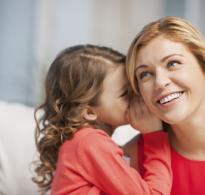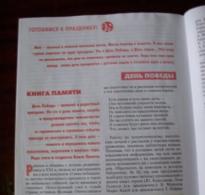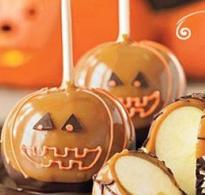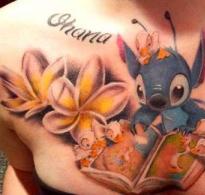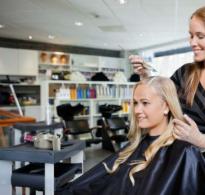Application ideas for children: pasta fish. Crafts from pasta: guide and examples for beginners Crafts from pasta fish
Glad to see you as a guest!
My son and I did it again crafts from, this time it's “ gold fish“. A wonderful character from a fairy tale, my son enjoyed making it, he especially liked painting our fish with nail polishes. I just have a few polishes left that I haven’t used for a long time, so they came in handy. My son also likes the glue gun, and every now and then he strove to glue something, including his fingers, but when he realized that the glue was hot, he put it aside and began to serve me pasta, so that I could I glued it myself. It was funny to watch the child as he sorted these pasta in his hands, he even tasted one, but realizing that it was not edible, he pulled it out of his mouth and tried to stick it to the fish. What I liked most was that he approached the process with great responsibility, but in the end it was clear that this began to tire him, so we began to work faster and finally came to the finish line. See for yourself.

1. To begin with, we prepared an environment for our Goldfish, that is, we made the sea. To do this, we cut out waves from light blue colored paper and glued them to dark blue cardboard with PVA glue.

2. Then we built a model of our pasta fish, so that it would be easier for us to glue each pasta in the right place.

3. Then glued all the pasta one by one.

The applique is made of pasta of various shapes on a plate. The base used is ordinary plasticine for children's creativity.
What motivated me to create was the huge assortment of pasta on supermarket shelves, varied in shape and size. I saw a lot of room for creativity in this.
Previously, I saw how crafts from cereals were made using a similar technique. They covered a bottle or glass with plasticine, and then laid out drawings of various cereals. It turned out very nice.
For my craft, I took a plate. It is better to use glass, ceramic or plastic dishes. It’s not very convenient to work with disposable dishes or foam plates, and the finished craft looks worse. I selected the pasta that, in my opinion, was most suitable for fish.

Prepared plasticine. I love improvisation, so I had a sketch in my head, but you can first draw the outline with a glass marker on the plate.
Progress:
1. Lightly warmed up the plasticine on the radiator (you can warm it and knead it in your hands).
2. Then I sculpted the outline of the fish from plasticine on a plate about 5 mm thick. In this case, it is not worth making it thinner, since large pasta will not hold well. It is not necessary to follow the sketch exactly. Excess plasticine is easy to remove, and if there is not enough, you can slightly smear it as you work.

3. Then I started “sticking” the pasta. They need to be pressed deeper to hold well. First I took large pasta, then filled the remaining space with small cones. I filled the empty niches with rice as much as possible. I broke off the long pasta for the tail with my hands to approximately the size, and in some places I folded 2-3 pieces. After painting and varnishing, the joints become almost invisible.

4. I painted the finished fish with gouache and the eyes and mouth with nail polish. Of course, it’s easier to color the pasta in advance and use already colored ones, but in this case there is less room for creativity. It is important to paint over the plasticine with a thick gouache brush in between, otherwise the craft will look sloppy.
5. Varnishing is a mandatory and final stage, since varnish not only adds shine and makes the appearance more aesthetic, but also securely secures the applique to the plate. I used quick-drying varnish. It is important to apply a lot of varnish so that it flows and fills the space between the pasta. In addition, I made a 5 mm wide varnish border around the craft. I covered this craft with 5 layers, which I applied as it dried. It is enough to cover less embossed applications with 2-3 layers of varnish.
After the varnish has dried, the craft is ready. Few people, without looking at it closely, guessed that it was made from ordinary pasta. The technique is very simple and my children took an active part in the work. Even my 4-year-old daughter enjoyed making pasta and painting them with a brush.
The goldfish is a symbol of good luck in many countries. And everyone knows that we ourselves are the architects of our own happiness. Therefore, today we will learn how to make a goldfish with our own hands and will not expect it from someone as a gift. This article contains the most interesting and simple ways to make a goldfish; you just have to choose the most suitable one for yourself.
From waste material
From scrap material you can make an excellent goldfish that will decorate your home or become the central figure in any postcard or painting. Now we will tell you how to do this.
What we need to take:
- thin cardboard;
- acacia leaves or maple seeds;
- regular PVA glue;
- a can of gold paint;
- scissors;
- tape with double-sided adhesive surface;
- regular pencil;
- blister packaging for medicine;
- black button;
- hairdressing varnish;
- shiny ribbon.
The first thing we need to do is draw the outline of our fish on cardboard. The larger the seeds, the larger the fish should be. We cut off the excess cardboard so that we only have the working shape of the fish. Starting from the tail, cover the mold with glue and place leaves and seeds on top, leaving no gaps between them. These materials will act as fish scales.
Next we need to work on the head of our craft. We form the head from the same cardboard. At the point where the eye will be located, we make a hole and attach a plastic blister mold there. Don't forget to put a button in the blister - it will serve as the pupil.
The first stage is completed. Next, cover the product with gold paint and let it dry. Now let's finish working with the head of our fish. We glue the blister with a button inside with double-sided tape to the fish’s head. See how it was done in the photo. Using a regular pencil we draw on the eyelashes. You can also paint a mouth or a few scales on the fish. The final stage: to prevent the paint from getting dirty, cover the fish with hairspray. We tie a shiny ribbon to the ponytail.
The master class is over, our fish is ready. All that remains is to find a use for it.
Unusual solutions
Pasta fish is very simple and very quick to make.
A shape is cut out of thick paper or cardboard. The eye and outline of the head are drawn.

Dry pasta is covered with transparent strong glue and placed on the mold.

By bending small pieces of paper into a fan shape, we get the tail and fins of our fish. Glue the parts to the places where they should be.

We decorate the remaining part of the canvas with paper in the shape of seaweed. You can also use pasta of a different color as decoration, they will become pebbles. Or attach real beads or pebbles to the bottom of the picture.

The pasta fish is finished. This painting can definitely be suitable as a craft for a kindergarten or as a decoration for a child’s room.
Video on how to easily and simply crochet a goldfish, even if you don’t know how to knit. The lesson provides a detailed diagram and description of the knitting process.
DIY beaded fish:
Using quilling technique
Any quilling patterns turn out to be very unusual and fascinating, our goldfish is no exception.
For work we will need:

- pieces of paper of various colors (for goldfish, shades of orange and yellow. For algae, shades of green are suitable);
- pebbles, rhinestones or beads to seat the eyes;
- regular toothpick;
- PVA glue and super glue;
- plastic cap.

If you plan to put the fish in the aquarium, you need:
- a small glass aquarium or round vase;
- pebbles

Additionally prepare:
- ruler with round holes;
- pins;
- stand for work.

We cut orange colored paper into equal strips and use a toothpick to roll the strips into a roller. Place the roller in the round hole of the ruler and release it so that it can unravel. The hole should be average in size among the others. We take out the roller and glue its end.

We make six of these rollers and flatten each of them in the middle.

We glue six rollers together as shown in the picture, take a piece of paper strip, wrap it around the glued rollers and glue the end of the strip in the same way.

We rotate the additional roller, glue it in the center of the workpiece and coat it and the edges of the workpiece with glue.

We twist the second exactly the same part, which will serve as the body of our fish, and glue it to the first. It should protrude slightly in the center on both sides.

We glue our part with a strip of paper.

Let's move on to the second stage. We need to make eyes and fins for the craft. To do this, we take two pieces of colored paper, one lighter, the other darker, and glue their ends.

We twist the roller from the resulting strip and lower it into the larger hole. The dark paper should be on the outside.

We flatten our rollers and bend them around the edges.

We attach the parts with glue to the body of the fish.

Place eyes on both sides with glue.



In the same way, we glue three bright and two light stripes together and, after twisting, lower them into a thirty-six mm mold.

We take a couple of pins and use them to move the center point to the side. We secure it with pins, drip a little glue and wait until it dries.

Once the glue has dried, bend the roller like this.

We make a tail from larger and smaller parts and glue it together.

We attach the third one on top.

Fourth from the bottom.


Glue the tail to the fish.

Here's how we did it.





















Master class: “Goldfish”. Technique: papier-mâché.
DIY goldfish for children from 8 years old. Master class with step-by-step photos.
Lavrova Tatyana Nikolaevna, teacher of the GPA MBOU - secondary school No. 11 named after G.M. Pyasetsky, OrelThis fish is not simple,
This fish is a goldfish.
You will find understanding with her -
Will fulfill three wishes!
Description: I propose to make a craft with the children using the papier-mâché technique on the theme: “Goldfish.” This master class is intended for teachers of additional education of children's associations, primary school teachers, as well as for those who love handicrafts.
Purpose: The material can be used in elementary school during reading lessons when getting acquainted with the work of A.S. Pushkin, art classes, labor lessons and club work, as well as for interior decoration.
Target: making paper crafts.
Tasks:- familiarization with the technique of making “Papier-mâché”;
- development of interest in nature, curiosity, imagination;
- fostering perseverance and accuracy when performing work.
Material and tools:

-PVA glue
-pieces of newspaper or any paper
-gold-colored glitter paper
- corrugated paper in blue, cyan and white colors
- eyes
-two wires and a small piece of plexiglass
Progress:
1. We sew a fish blank from fabric and stuff it with available material.

2. Wrap the workpiece with stretch and apply pieces of paper coated with glue.
We glue the first layer of “Papier-mâché” onto the workpiece along the entire perimeter, let it dry and apply the second layer - a total of four such layers need to be made.
3. To make the wave, I used a piece of plexiglass and two wires. The distance between the wires is sealed with paper coated with glue. That's what came out of it.

4. Now we “paint over” the wave with pieces of corrugated paper.

5. For the fish, cut strips of golden paper 1.5 cm wide. Make one edge wavy, in the form of scales, and glue it to the body. The tail is made from strips 0.5 cm wide.

6. At the end of the work, glue the eyes and make fins.


7. All that remains is to make a crown and our fish is ready.

8. To imitate sea foam, I suggest cutting corrugated paper in various shades of blue, cyan, and white paper.

9. Glue the fish to the top of the wave. All is ready. Try it and you will definitely succeed. Good luck!

Marina Orlova
Materials and tools:
a sheet of cardboard, plasticine of blue and green colors of different shades, pasta, stack, gouache or watercolor paints, brush for painting.
As a base for cardboard, you can use not only cardboard, but also a plastic board. The main thing is that the plasticine sticks well.

Mix plasticine of different colors for the background of the future painting.

Mix the plasticine not until the color is uniform, but so that streaks remain. Stretch the resulting plasticine over the entire cardboard, but not in a very thin layer so that you can embed it into it pasta.

For the picture we will take different pasta - horns, shells, spaghetti.

To make the picture beautiful, we first make a frame. Let's take one at a time pasta, put it in the place where the frame should be, and press it down. In plasticine pasta holds up well.

When the frame is ready, draw a sketch of the picture in a stack.

We start the fish from the body. Lay out small pasta- shell scales fish, leaving room for the head.

We put our heads out of others macaron. We make fins from spaghetti.

Now let's post it fish tail. It should be long and beautiful.

We will lay out algae from shells and from ordinary macaron.

If desired, you can make crab. It is made from pasta shells and spaghetti.

The picture is ready. You can make air bubbles from white balls.

In order for our picture to be completely ready, we need to color it.



